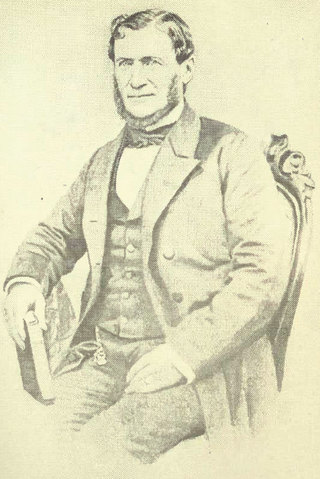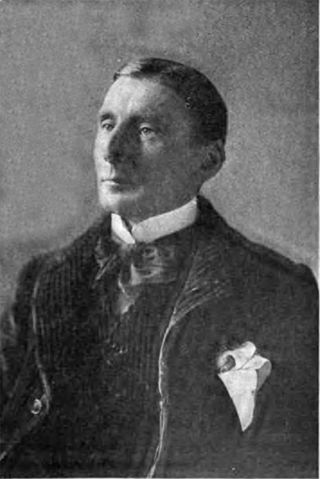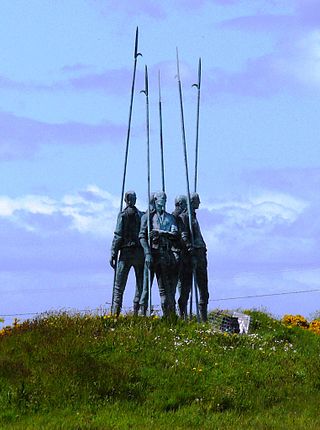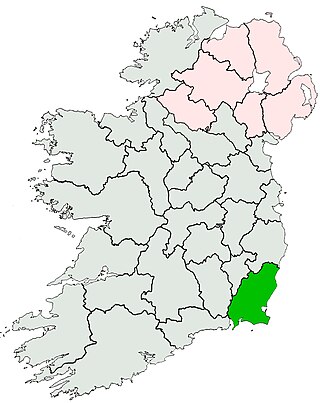Related Research Articles

County Wexford is a county in Ireland. It is in the province of Leinster and is part of the Southern Region. Named after the town of Wexford, it was based on the historic Gaelic territory of Hy Kinsella, whose capital was Ferns. Wexford County Council is the local authority for the county. The population of the county was 163,527 at the 2022 census.

Gorey is a market town in north County Wexford, Ireland. It is bypassed by the main M11 Dublin to Wexford road. The town is also connected to the railway network along the same route. Local newspapers include the Gorey Guardian.

The Battle of Vinegar Hill was a military engagement during the Irish Rebellion of 1798 on 21 June 1798 between a force of approximately 13,000 government troops under the command of Gerard Lake and 16,000 United Irishmen rebels led by Anthony Perry. The battle, a major rebel defeat, took place on 21 June 1798 on a large rebel camp on Vinegar Hill and in the streets of Enniscorthy, County Wexford and marked the last major attempt by the rebels to hold and control territory taken in Wexford.
John Kelly lived in the town of Killanne in the parish of Rathnure, west of Enniscorthy, in County Wexford in Ireland, and was a United Irish leader who fought in the Irish Rebellion of 1798. Kelly was obviously well known to rebels and loyalists alike during the short duration of the Wexford Rebellion but very little is known of him outside this time. He was one of the leaders of the rebel victory at the Battle of Three Rocks which led to the capture of Wexford town but was later seriously wounded while leading a rebel column at the Battle of New Ross.
Anthony Perry, known as the "screeching general" was one of the most important leaders of the United Irish Wexford rebels during the 1798 rebellion.

Ogle Robert Gowan was a farmer, Orangeman, journalist and political figure in Upper Canada and Canada West.

MylesByrne was an insurgent leader in Wexford in the Irish Rebellion of 1798 and a fighter in the continued guerrilla struggle against British Crown forces in the Wicklow Hills until 1802. In 1803 collaborated closely with Robert Emmet in plans for a renewed insurrection in Dublin. After these misfired, he took a commission in Napoleon’s Irish Legion, seeing action in the Low Countries, Spain and at the Battle of Leipzig. Under the Bourbon Restoration he was deployed to Greece, and retired as a chef de bataillon. In his later years, he was the Paris correspondent for the Young Irelander paper The Nation, and dictated his memoirs. In these, he advanced the image of the United Irishmen as a cohesive revolutionary organisation dedicated to the achievement of a national democratic government.

Sir James Robert Gowan, was a Canadian lawyer, judge, and senator.
General Robert Edward King, 1st Viscount Lorton, styled The Honourable from 1797 to 1800, was an Anglo-Irish peer and politician. He was notable for his strong support for anti-Catholic policies and his close association with the Orange Order.

Sir Thomas Henry Grattan Esmonde, 11th Baronet, was an Irish Home Rule nationalist politician and author.
Beauchamp Bagenal Harvey was a barrister and a commander of the United Irishmen in the Battle of New Ross during the 1798 Rebellion.

The Wexford Rebellion refers to the events of the Irish Rebellion of 1798 in County Wexford. From 27 May until 21 June 1798, Society of United Irishmen rebels revolted against British rule in the county, engaging in multiple confrontations with Crown forces. The most successful and destructive rising in all the counties of Ireland, United Irishmen rebels experienced a number of early successes in the county despite being seen as a relatively loyal county by the Dublin Castle administration due to a series of military victories. However, the tide soon turned against the United Irishmen in Wexford as Crown forces poured into the region, engaging in a brutal counterinsurgency which indiscriminately targeted suspected rebels and eventually suppressed all rebel activities in the county.
Thomas Cloney was a United Irishman, and leader of the rebellion in County Wexford in 1798, and with Robert Emmet a co-conspirator in the attempt to renew the republican insurrection in 1803.
Edward Hay (1761–1826) was the author of a book on the Irish Rebellion of 1798, and a witness to many of the events of that time.

County Wexford is a county located in the south-east of Ireland, in the province of Leinster. It takes its name from the principal town, Wexford, named 'Waesfjord' by the Vikings – meaning 'inlet (fjord) of the mud-flats' in the Old Norse language. In pre-Norman times it was part of the Kingdom of Uí Cheinnselaig, with its capital at Ferns.
George Arthur Hastings Forbes, 7th Earl of Granard KP, styled Viscount Forbes from 1836 to 1837, was an Irish peer and soldier.
Philip Roche was an Irish Roman Catholic priest who in the Irish Rebellion of 1798 commanded insurgents in Wexford and was subsequently executed.

Cornelius Grogan (1738?–1798), was a United Irishman and commissary-general in the insurgent army of Wexford in the Rebellion of 1798.
The High Sheriff of Wexford was the British Crown's judicial representative in County Wexford, Ireland from the 16th century until 1922, when the office was abolished in the new Irish Free State and replaced by the office of Wexford County Sheriff. The sheriff had judicial, electoral, ceremonial and administrative functions and executed High Court Writs. In 1908, an Order in Council made the Lord-Lieutenant the Sovereign's prime representative in a county and reduced the High Sheriff's precedence. However, the sheriff retained his responsibilities for the preservation of law and order in the county. The usual procedure for appointing the sheriff from 1660 onwards was that three persons were nominated at the beginning of each year from the county and the Lord Lieutenant then appointed his choice as High Sheriff for the remainder of the year. Often the other nominees were appointed as under-sheriffs. Sometimes a sheriff did not fulfil his entire term through death or other event and another sheriff was then appointed for the remainder of the year. The dates given hereunder are the dates of appointment. All addresses are in County Wexford unless stated otherwise.
John Henry Colclough was a United Irishman, who was executed in Wexford following the Irish Rebellion of 1798.
References
- 1 2 3 Gowan Family Dossiers, Paul Dwight Turner, genealogy, family
- ↑ The Hattons Of Wexford
- ↑ A Local's knowledge
- ↑ H.Ardagh, The Life of Sir James Robert Gowan (Toronto, 1911)
- ↑ familyPAF – pafg13 – Generated by Personal Ancestral File
- ↑ Akenson, Donald (1 January 1986). The Orangeman: The Life & Times of Ogle Gowan. James Lorimer & Company. ISBN 978-0-88862-963-0.
- ↑ Hay, Edward, 'History of the Irish Insurrection of 1798', Dublin, 1803, published by John Kennedy 1847, p118
- ↑ The stories never written about the 1798 Rising Archived 2008-08-29 at the Wayback Machine
- ↑ BBC Short History of Northern Ireland
- ↑ Hay, Edward, 'History of the Irish Insurrection of 1798', Dublin, 1803, published by John Kennedy 1847.
- ↑ Holyfort Parish Records
- ↑ Vol 1 of Gowan Clan by James H B Gowan
- ↑ North Wexford Tourism – Craanford Archived 2006-11-19 at the Wayback Machine